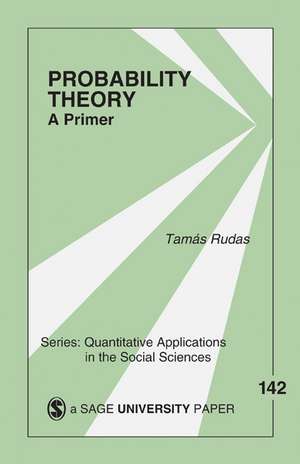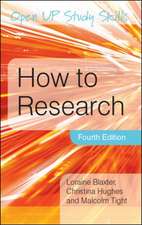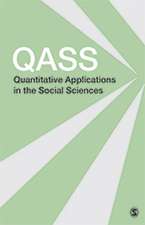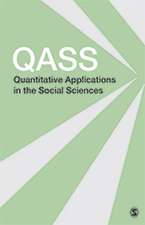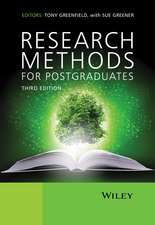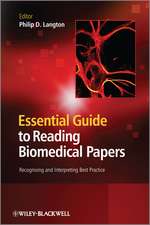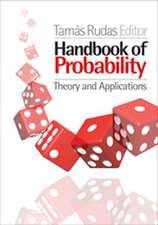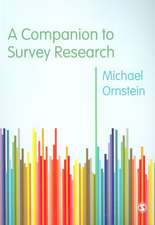Probability Theory: A Primer: Quantitative Applications in the Social Sciences, cartea 142
Autor Tamas Rudasen Limba Engleză Paperback – 30 aug 2004
Din seria Quantitative Applications in the Social Sciences
-
 Preț: 323.09 lei
Preț: 323.09 lei -
 Preț: 285.10 lei
Preț: 285.10 lei -
 Preț: 285.33 lei
Preț: 285.33 lei -
 Preț: 274.06 lei
Preț: 274.06 lei -
 Preț: 285.37 lei
Preț: 285.37 lei -
 Preț: 321.52 lei
Preț: 321.52 lei -
 Preț: 330.81 lei
Preț: 330.81 lei -
 Preț: 322.61 lei
Preț: 322.61 lei -
 Preț: 321.79 lei
Preț: 321.79 lei -
 Preț: 323.15 lei
Preț: 323.15 lei -
 Preț: 273.46 lei
Preț: 273.46 lei -
 Preț: 275.42 lei
Preț: 275.42 lei -
 Preț: 277.33 lei
Preț: 277.33 lei -
 Preț: 322.06 lei
Preț: 322.06 lei -
 Preț: 286.18 lei
Preț: 286.18 lei -
 Preț: 285.71 lei
Preț: 285.71 lei -
 Preț: 322.06 lei
Preț: 322.06 lei -
 Preț: 321.52 lei
Preț: 321.52 lei -
 Preț: 322.30 lei
Preț: 322.30 lei -
 Preț: 285.47 lei
Preț: 285.47 lei -
 Preț: 322.61 lei
Preț: 322.61 lei -
 Preț: 321.79 lei
Preț: 321.79 lei -
 Preț: 323.15 lei
Preț: 323.15 lei -
 Preț: 323.36 lei
Preț: 323.36 lei -
 Preț: 322.41 lei
Preț: 322.41 lei -
 Preț: 323.42 lei
Preț: 323.42 lei -
 Preț: 322.61 lei
Preț: 322.61 lei -
 Preț: 284.99 lei
Preț: 284.99 lei -
 Preț: 285.47 lei
Preț: 285.47 lei -
 Preț: 284.99 lei
Preț: 284.99 lei -
 Preț: 289.18 lei
Preț: 289.18 lei -
 Preț: 287.82 lei
Preț: 287.82 lei -
 Preț: 316.12 lei
Preț: 316.12 lei -
 Preț: 288.96 lei
Preț: 288.96 lei -
 Preț: 316.71 lei
Preț: 316.71 lei -
 Preț: 314.98 lei
Preț: 314.98 lei -
 Preț: 317.26 lei
Preț: 317.26 lei -
 Preț: 314.60 lei
Preț: 314.60 lei -
 Preț: 289.95 lei
Preț: 289.95 lei -
 Preț: 289.18 lei
Preț: 289.18 lei -
 Preț: 315.36 lei
Preț: 315.36 lei -
 Preț: 314.98 lei
Preț: 314.98 lei -
 Preț: 314.38 lei
Preț: 314.38 lei -
 Preț: 316.33 lei
Preț: 316.33 lei -
 Preț: 316.51 lei
Preț: 316.51 lei -
 Preț: 314.76 lei
Preț: 314.76 lei -
 Preț: 288.41 lei
Preț: 288.41 lei -
 Preț: 316.51 lei
Preț: 316.51 lei
Preț: 314.98 lei
Nou
Puncte Express: 472
Preț estimativ în valută:
60.27€ • 64.45$ • 50.25£
60.27€ • 64.45$ • 50.25£
Carte tipărită la comandă
Livrare economică 18 aprilie-02 mai
Preluare comenzi: 021 569.72.76
Specificații
ISBN-13: 9780761925064
ISBN-10: 0761925066
Pagini: 80
Dimensiuni: 140 x 216 x 4 mm
Greutate: 0.1 kg
Ediția:New.
Editura: SAGE Publications
Colecția Sage Publications, Inc
Seria Quantitative Applications in the Social Sciences
Locul publicării:Thousand Oaks, United States
ISBN-10: 0761925066
Pagini: 80
Dimensiuni: 140 x 216 x 4 mm
Greutate: 0.1 kg
Ediția:New.
Editura: SAGE Publications
Colecția Sage Publications, Inc
Seria Quantitative Applications in the Social Sciences
Locul publicării:Thousand Oaks, United States
Cuprins
INTRODUCTION
WHERE DO PROBABILITIES COME FROM?
DETERMINISTIC AND STOCHASTIC MODELS
FREQUENTIST AND OTHER APPROACHES
RELATIVE FREQUENCIES
EXPERIMENTS WITH INFINITELY MANY OUTCOMES
PROPERTIES OF PROBABILITY
BASIC PROPERTIES
ADDITIVITY
DENSITY FUNCTIONS
COUNTABLE ADDITIVITY
PROBABILITY DISTRIBUTIONS AND RANDOM VARIABLES
THE DISCRETE CASE
THE BINOMIAL DISTRIBUTION
THE CONTINUOUS CASE
THE NORMAL DISTRIBUTION
THE CHI-SQUARED DISTRIBUTION
CONCLUSIONS
NOTES
REFERENCES
ABOUT THE AUTHOR
WHERE DO PROBABILITIES COME FROM?
DETERMINISTIC AND STOCHASTIC MODELS
FREQUENTIST AND OTHER APPROACHES
RELATIVE FREQUENCIES
EXPERIMENTS WITH INFINITELY MANY OUTCOMES
PROPERTIES OF PROBABILITY
BASIC PROPERTIES
ADDITIVITY
DENSITY FUNCTIONS
COUNTABLE ADDITIVITY
PROBABILITY DISTRIBUTIONS AND RANDOM VARIABLES
THE DISCRETE CASE
THE BINOMIAL DISTRIBUTION
THE CONTINUOUS CASE
THE NORMAL DISTRIBUTION
THE CHI-SQUARED DISTRIBUTION
CONCLUSIONS
NOTES
REFERENCES
ABOUT THE AUTHOR
Notă biografică
Tamas Rudas is the Head of the Department of Statistics and Dean of the Faculty of Social Sciences at Eotvos Lorand University (ELTE) in Budapest. He is also the Academic Director of the TARKI Social Research Centre. His main research area is statistics and its applications in the social sciences, especially the analysis of categorical data. He has published his work in many theoretical, applied, and methodological journals, including Annals of Statistics, Journal of the Royal Statistical Society, Sociological Methodology, Communication in Statistics, Journal of Educational and Behavioral Statistics, and Quality and Quantity. Dr. Rudas is also the author of Odds Ratios in the Analysis of Contingency Tables (Sage, 1998).
Descriere
Aimed at demystifying probability theory, this text provides a brief and non-technical introduction to the subject. Employing few formulas, author Tamas Rudas uses intuitive but precise descriptions and examples to explain procedures in probability as a springboard for understanding the concepts of expectation, variance, continuous distributions, normal distribution, chi-squared distribution, and the applications of probability theory in research practice. This book gives researchers and students a solid foundation for understanding probability, and can serve as a supplement in general statistics courses.
